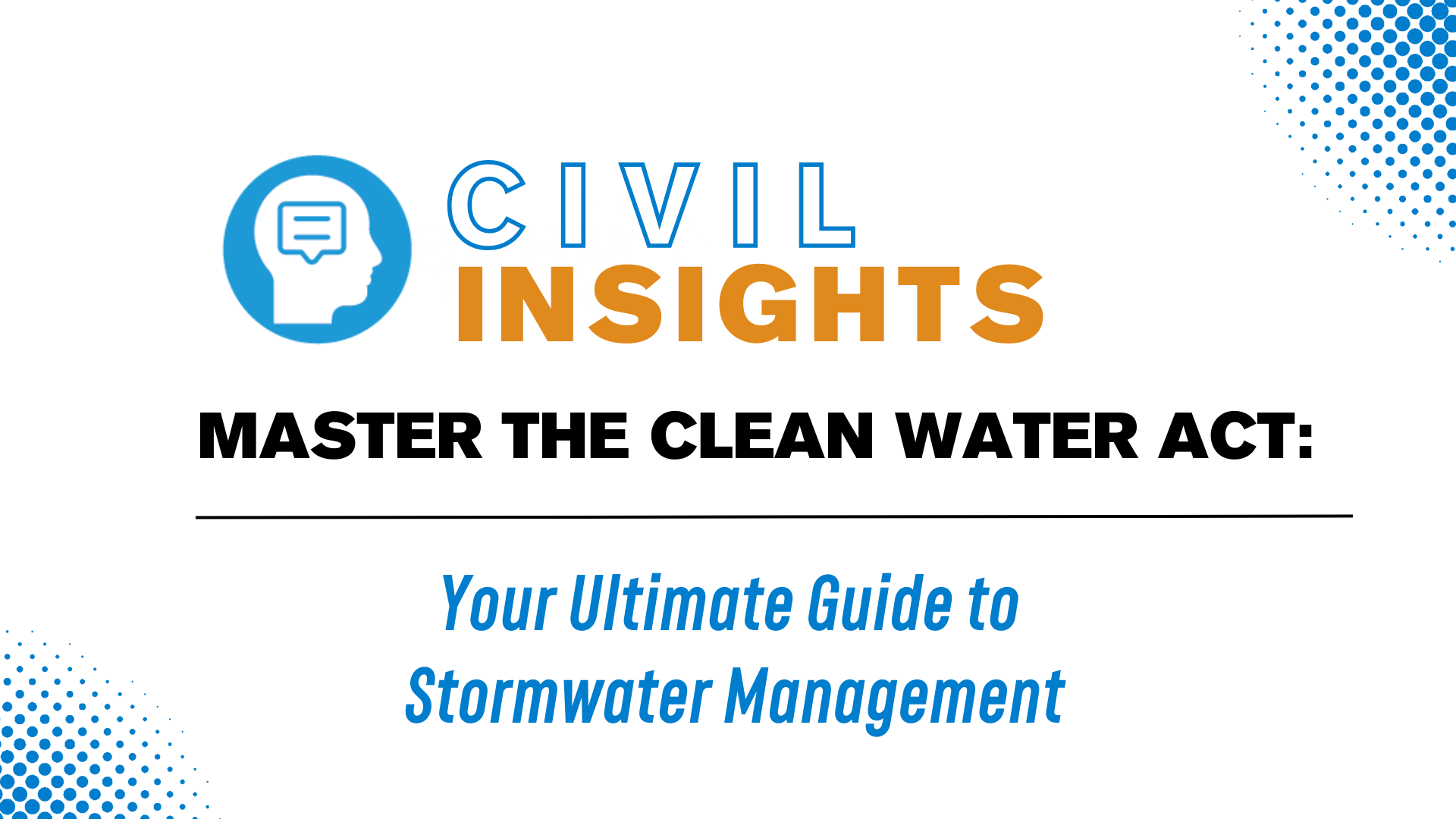Take Action: Ensure Clean Water with Effective Stormwater Management Strategies.
Stormwater management, a component of the Clean Water Act, helps preserve water quality and reduce runoff pollution.
The Clean Water Act (CWA) is an important legislation that protects the nation's water resources from pollution caused by different sources, including construction sites, industrial facilities, and urban and agricultural runoff. The CWA sets the guidelines for regulating discharges of pollutants into the waters of the United States and quality standards for surface waters. One of the significant components of the CWA is the stormwater management program, which aims to minimize the impact of runoff on water resources.
This blog post will provide a comprehensive guide on stormwater management and how it helps preserve water quality.
Minnesota Minimum: Effective Stormwater Management to Protect Human Health and the Environment.
Minnesota has set minimum requirements for stormwater management, which include rate control to existing conditions and treating one inch of runoff over impervious areas. Local municipalities and Watershed Districts may have more stringent requirements and should always be consulted at the beginning of a project. Meeting these standards is essential to ensure that runoff quality does not pose a risk to human health and the environment.
Due Diligence Before Design: Site Selection, Flood Plains, and Geotechnical Evaluations.
Before embarking on a stormwater management project, it's essential to carry out due diligence to identify the site's requirements. This involves considering stormwater needs such as site selection, agencies, flood plains, and wetlands. Additionally, a survey and geotechnical evaluation of the site should be conducted to evaluate the available infrastructure, soils, and other relevant factors.
Optimize Stormwater Management with Best Management Practices.
Several Best Management Practices (BMPs) can be incorporated into a stormwater management plan. Selecting the BMP most suitable for the site will depend on the site's soils, available infrastructure, the project's cost, the required rate, volume control, and treatment standards for the area. When considering soils, testing for contamination, groundwater elevation, and continuous infiltration sampling is essential. Obtaining boring logs is an effective way to determine the soil's nature and make precise decisions based on the findings.
Achieve Effective Stormwater Management with Rate Control, Volume Control, and Treatment Strategies.
Effective stormwater management requires a combination of strategies, including rate control, volume control, and treatment. Rate control is the process of controlling the discharge rates of stormwater from a specific site to match the natural flow rate of the receiving waters. Volume control or infiltration is the process of allowing stormwater to infiltrate and recharge groundwater sources naturally. Lastly, treatment involves removing pollutants and sediments from runoff through different techniques such as filtration, infiltration, and adsorption. The methods for addressing the above is as follows:
-
Rate Control: Various rate control methods include detention basins, rate control tanks, and rooftop ponding. Detention basins temporarily hold the water runoff, allowing it to drain into the groundwater or downstream storm sewer slowly. Roofs can be designed to have ponds to control runoff, and rate control tanks allow for underground runoff storage.
-
Volume Control: Infiltration tanks or basins effectively manage volume from stormwater runoff, allowing water to infiltrate the ground slowly. Permeable pavements and stormwater reuse are other effective ways to control volume.
-
Treatment: Effective treatment methods include infiltration or filtration basins, tanks, or permeable pavement. These techniques help remove pollutants and sediments from stormwater runoff.
-
Pre-Treatment: Pre-treatment can be done through different techniques, such as sump catch basins, vegetated swales, rain gardens, hydrodynamic separators, and settlement basins. These methods help remove sediments before stormwater enters the primary stormwater management system and assist in limiting the long-term maintenance of the primary system.
-
Long-Term Maintenance: To maintain the effectiveness of stormwater management systems, regular maintenance is essential. This involves adhering to the set maintenance schedules and meeting proper testing requirements. Additionally, it's necessary to have an easement/surety in place for long-term maintenance.
Keep Water Clean & Safe - Implement Effective Stormwater Management Strategies.
Stormwater management is crucial to preserving water quality and ensuring it's safe for human and aquatic life. The Clean Water Act provides guidelines on regulating discharges of pollutants into the waters of the US and surface waters' quality standards. Implementing effective stormwater management strategies involves complying with Minnesota's minimum requirements and incorporating the best management practices suited for the individual site. We hope this comprehensive overview has provided insights into stormwater management and why it's essential to maintain a healthy environment for all.
Building relationships, communities, and sustainable projects—Discover the power of BKBM's Civil Engineering approach today.
As a Minneapolis-based Civil Engineering firm, the best engineering happens when the professionals at BKBM converse with our clients, listening and understanding their project needs and requirements. That's why we work hard to build strong relationships that will enhance our understanding of how our work fits into the broader context of society. With every project, we aim to create something that makes the world a better place; that's why we strive to engage in sustainable and collaborative practices that benefit not only our clients but the environment and people interacting with our projects. BKBM has offices located in Minneapolis, Minnesota, and Denver, Colorado.


